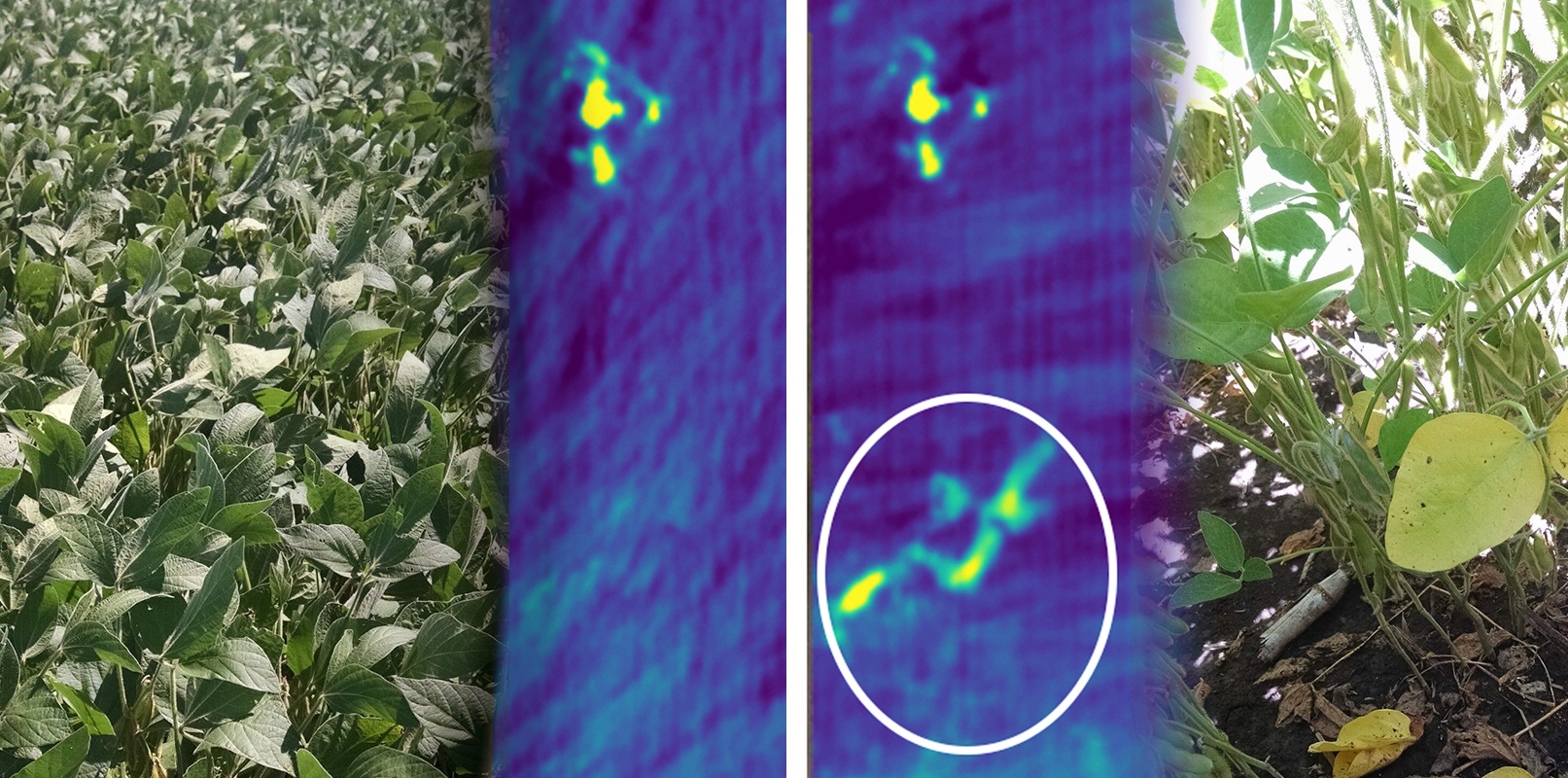
As seen in the images above, Ceres proved helpful identifying outbreaks of Cercospora beneath a healthy-looking soybean canopy.
Ceres Imaging, which provides science-backed aerial images to growers, will offer Midwestern corn and soybean farmers an early warning system for pests and diseases in 2018.
The pest and disease detection product was tested in partnership with Evergreen FS, a cooperative that serves five counties in Central Illinois. Evergreen FS agronomists validated the quality of Ceres imagery on test fields of corn and soybeans, with early notice of pest and disease outbreaks seen 10 days before the issues show up in traditional aerial images (also known as Normalized Vegetation Difference Index, or NDVI). That saves money for farmers by making the scouting process more efficient and directing fungicide application to priority fields.
“This year almost all of the trouble spots Ceres images picked up were disease outbreaks,” said Ryan Vogelzang, CCA, an agronomy technology manager for Evergreen FS. “We’ve experienced a nice return on investment (ROI) from Ceres images of applications of fungicide. This sort of technology helps us target the proper fields.”
Growers who have tried the newly developed imagery say it provides unique value.
"We can see more detail than we've ever seen before with these images," says Jeff Brown, "Mr. 350," an award-winning corn grower from Blue Mound, Illinois. "It's taking it to a whole other level of intense management. More data gives us the ability to make more and better decisions, and it helps us figure out what's causing our success and failures out there."
The imagery is especially helpful in identifying disease outbreaks and pests after corn and soybean plant canopies grow large enough to touch each other, a phase of growth known as “canopy closure.” By the time disease is visible at the top of a canopy, significant damage has already been done and the resulting yields will suffer. By flying planes over large and dispersed acreage with a hefty rig of custom sensors, Ceres can reveal disease before it spreads to the canopy, where it can be seen by inspecting the field on foot or from a truck.
“Evergreen has helped us create an image product we know will be a big help to farmers in Illinois and beyond,” said Ashwin Madgavkar, CEO and founder of Ceres Imaging. “We pride ourselves on providing images that solve real problems. The way we achieve that is by putting together the right product for each crop and testing it with partners to refine our approach.”
About Ceres Imaging
Ceres Imaging is a California-based provider of aerial imagery for farmers and agriculture companies. Ceres products serve as an early warning system of threats to crops before losses occur, highlighting irrigation problems, disease, pests, and more. Ceres offers pest and disease monitoring for Midwest grain farmers in partnership with Evergreen FS. It also serves vineyards and tree nut growers with a unique Water Stress view backed by research conducted by the University of California Cooperative Extension. For more information, visit CeresImaging.net.
Product updates Aerial imagery Pest and disease Company news Midwest
